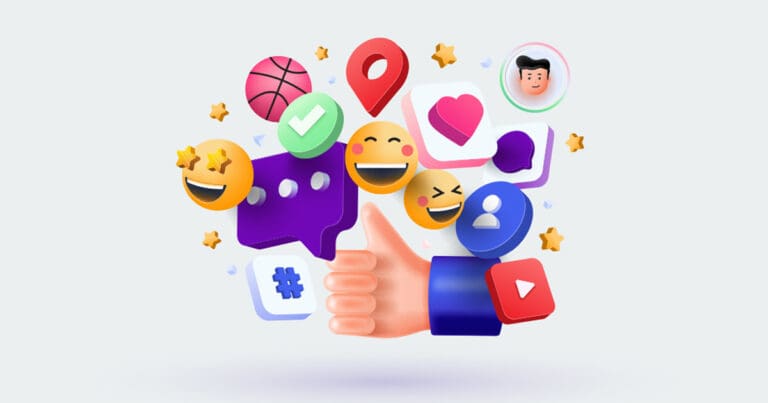4 Creative Roles Every Company Needs, Plus Salaries

Leaders of business know quality content is a crucial component of any effective digital marketing strategy. This is why it’s crucial to build your creative team with professionals who can deliver the content your target audience is looking for, along with implementing enhanced, fully-realized content strategies.
We breakdown why creative roles are important, how the impact your business, plus the most in-demand creative jobs that very company should hire for.
What are creative positions?
In order for any company to be successful, it needs a creative team. This team is responsible for developing and executing ideas that will help the company reach its goals.
Without a creative team, businesses would struggle to come up with new ways to market their products or services, connect with their customers, and stand out from the competition.
What creative jobs are in demand?
Creative Director, UX/UI Designer and Senior Copywriter are the top 3 roles that are currently in highest demand based on market and employment trends.
These roles are instrumental in helping your digital marketing teams communicate your brand clearly, elevate your designs, produce compelling content, and get the results needed to drive success.
1. Creative Director
The average salary range for creative directors is $115,000-$190,000.
Every digital marketing team needs a creative strategy. Effective Creative Directors are concerned with more than just a brand’s aesthetic.
These experts utilize user data to develop targeted content strategies to integrate throughout your target audience’s customer journey to produce more conversions, improved CTR, and build customer loyalty.
2. UX/UI Designer
The average salary range for UX/UI Designers is $80,000-$150,000.
When it comes to website speed and design, it’s imperative to keep the user experience at the forefront as a slow or confusing website design will impact your customers’ purchasing decisions.
Without a good UX/UI designer on your creative team, you won’t be able to achieve the brand cohesion and lead generation you’re looking for. You’ll want to remember, good design is good business.
3. Senior Copywriter
The average salary range for Senior Copywriters is $70,000-$120,000.
Your marketing team will want to bring on a Senior-level Copywriter because these are the professionals who know how to create the business-appropriate content your audience needs — in a way that’s quick, conversational, and informative.
The Senior Copywriter you bring on should be more than a good writer; they should also be well-versed in latest SEO practices and social media trends.
4. Content Strategist
The average salary range for Content Strategist is $77,000-$146,000.
A content strategist is a professional who helps an employer create, develop, and manage the content of their organization or business.
They analyze current content and determine what changes need to be made in order to improve its effectiveness.
Content strategists help employers gain maximum visibility from their web presence, increase customer engagement, build trust through quality content, establish goals for the organization’s digital assets, and help ensure that all published items are optimized for search engines.
Why creative roles & hires are important for your business
Creative roles can increase revenue
82% of Tech executives that participated in a Forrester study agreed that their businesses directly benefit from prioritizing creativity.
Many of the execs explained that after investing in the importance of creativity and their creative talent, they have seen increased revenue growth and higher market shares.
Creative roles give companies a competitive advantage
64% of marketing experts in a recent Marketing Charts survey revealed they’re looking to better understand how to build a scalable creative content strategy.
In other words, your competitors recognize the power of compelling content and are investing in the talent to produce it.
This means you need to secure qualified professionals to fill your essential creative roles now to continue driving innovation and revenue growth.
Creative roles are in high demand
Creativity is a crucial element of any business strategy because — according to Harvard Business School — it drives innovation, increases productivity, and allows for adaptability.
That, coupled with the fact that there were over 20,000 creative job postings in the tech industry alone in 2021 shows that creative roles are valued and in high demand.
Companies who are wary about prioritizing creativity only have to look to Tech giants like Apple, Facebook, and Google to see how far creativity can take a business.
Hiring talented creative teams matter for your business
Your business must ensure you have the professionals who can excel at these three essential creative roles if you want to see continued revenue growth and audience expansion.
Tech and leadership roles will only get you so far. It’s the creative writers, creative designers, and creative thinkers that will take your company’s vision to fruition.
Find great talent when you partner with Mondo
Looking to hire? Contact us to get started:
More articles about top industry trends:
- Companies Face Backlash Over Return to Office Plans
- 10 Tech Jobs That Saw the Highest Salary Growth This Year
- Why Take-Home Assignments are the Biggest Mistake for Hiring Managers
- Pay Transparency: What States Have It & Why It’s Important
- How Offering Remote Work Gives Companies a Competitive Advantage
- What is Employee Appreciation & Why is it Important?



